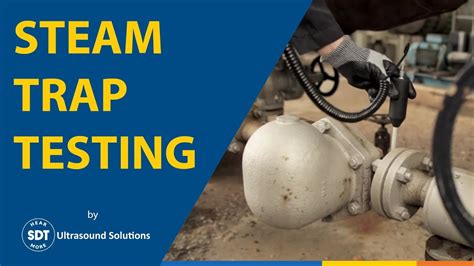How To Test Steam Traps
Ronan Farrow
Mar 26, 2025 · 3 min read

Table of Contents
How to Test Steam Traps: A Comprehensive Guide
Steam traps are crucial components in steam systems, preventing the loss of valuable energy and ensuring efficient operation. Regular testing is essential to maintain their effectiveness and prevent costly downtime. This guide provides a comprehensive overview of how to test steam traps, covering various methods and considerations.
Understanding Steam Trap Functionality
Before diving into testing methods, it's vital to understand how steam traps function. Their primary role is to discharge condensate (water formed from steam) while preventing the escape of live steam. This is achieved through various mechanisms, including thermodynamic, mechanical, and thermostatic traps. Each type requires a slightly different approach to testing.
Why Regular Testing is Crucial
Neglecting steam trap maintenance can lead to several issues:
- Energy Waste: A malfunctioning trap can release valuable steam, leading to significant energy loss and increased operational costs.
- Equipment Damage: The presence of condensate in steam lines can cause water hammer, erosion, and damage to equipment.
- Reduced Efficiency: Inefficient steam distribution due to faulty traps reduces the overall efficiency of the steam system.
- Safety Hazards: Malfunctioning traps can create unsafe conditions, such as scalding from escaping steam.
Methods for Testing Steam Traps
Several methods can be employed to test the functionality of steam traps, each offering different levels of accuracy and complexity.
1. The "Listening Test" (Basic Inspection)
This is a quick and easy method that can identify some obvious problems. Carefully listen near the steam trap for unusual noises, such as:
- Continuous hissing or whistling: Indicates that live steam is escaping, suggesting a faulty trap.
- Gurgling or sputtering: Suggests intermittent operation or partial blockage.
- No sound: Could indicate a completely blocked trap.
Limitations: This method is unreliable for identifying subtle malfunctions. It's best used as a preliminary check before employing more thorough methods.
2. The "Temperature Test"
This method involves comparing the temperature of the steam trap inlet and outlet. A functioning trap should show a significant temperature difference; the outlet will be considerably cooler due to the discharge of condensate. A minimal or no temperature difference suggests a potential problem.
Considerations: Accurate temperature measurements require appropriate thermometers and careful observation. This method is best suited for thermostatic traps.
3. The "Ultrasonic Testing"
Ultrasonic testing utilizes specialized equipment to detect the presence of steam leaks, even small ones. The device emits ultrasonic waves, and the resulting echoes indicate the presence of leaks. This is a more advanced technique requiring specific training and equipment.
Advantages: This method is highly sensitive and can detect leaks even in noisy environments.
4. The "Pressure Test" (Advanced Technique)
This more involved approach may require shutting down the steam system temporarily. It involves isolating the trap and applying a pressure test to verify its integrity and sealing capabilities.
Safety Precautions: Always follow safety protocols and consult professional guidelines when performing pressure tests.
Choosing the Right Testing Method
The most appropriate testing method depends on several factors:
- Type of steam trap: Different trap types may require different testing methods.
- Available resources: Some methods require specialized equipment and training.
- System complexity: Complex steam systems may require more thorough testing procedures.
- Safety regulations: Always adhere to relevant safety guidelines and regulations.
Regular Maintenance is Key
Regular inspection and testing are vital for maintaining optimal steam trap performance. Develop a preventative maintenance schedule to minimize downtime and ensure the long-term efficiency of your steam system. Remember to always prioritize safety when performing any maintenance or testing procedures. If you are unsure about any aspect of steam trap testing or maintenance, consult with qualified professionals.
Featured Posts
Also read the following articles
| Article Title | Date |
|---|---|
| How To Treat Bv And Uti At The Same Time | Mar 26, 2025 |
| Low Amh How Many Eggs Retrieved | Mar 26, 2025 |
| How To Smoke Kingfish | Mar 26, 2025 |
| Baileys Irish Cream How Much | Mar 26, 2025 |
| Eagle Lights How To | Mar 26, 2025 |
Latest Posts
Thank you for visiting our website which covers about How To Test Steam Traps . We hope the information provided has been useful to you. Feel free to contact us if you have any questions or need further assistance. See you next time and don't miss to bookmark.
